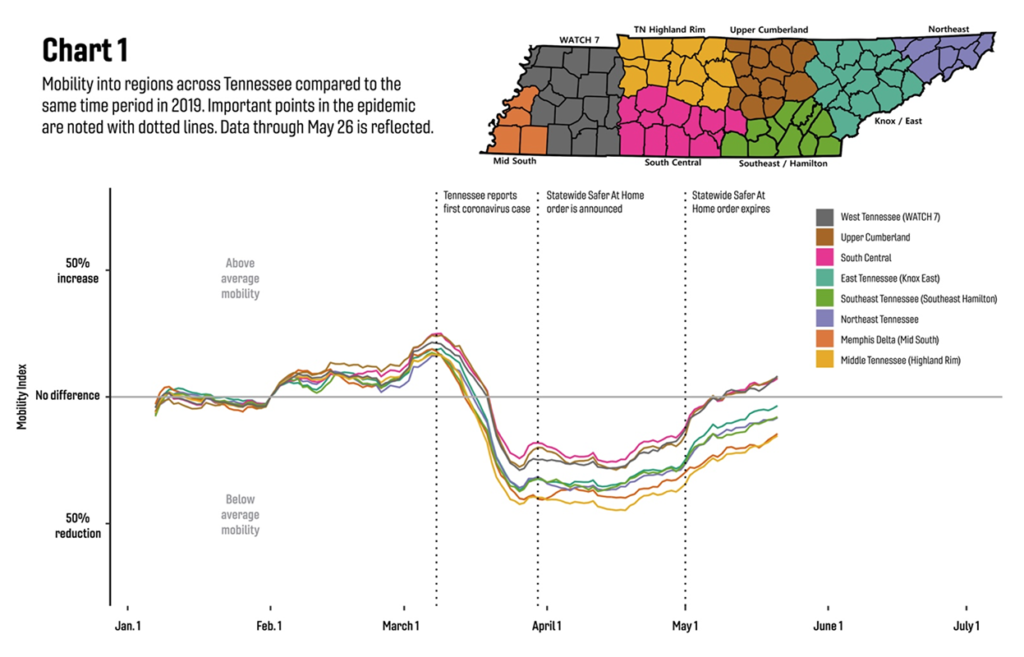
A report out Friday from Vanderbilt University researchers shows Tennesseans’ travel activity dropped steeply after the state’s first coronavirus case was detected, even before a statewide stay-at-home order was issued.
The report used anonymized cellphone data to create charts that detail how mobility plunged in March and has remained low in some regions and business sectors.
The first chart shows the timing of reduced travel activities, and how all regions have begun increasing their mobility since restrictions have started to lift. “Non-metro areas of the state have seen larger increases in movement after the Safer at Home order expired on May 1,” the report says.

The second chart shows what may seem like common sense: travel to areas that were most impacted by the coronavirus decreased significantly more than travel to areas that were least impacted.
The report says “the most affected areas continue to see substantially lower economic activity.” It says that suppressing the spread of the virus should be a top priority to prevent further negative economic impacts.

The final chart shows how different types of businesses have seen a range of changes.
Grocery stores, for example, saw minimal drops in visits compared to other sectors. Meanwhile, child care facilities saw their visits plummet in March. Trips to day care services remains well below half of what it was a year ago.

View the whole report with charts here.

